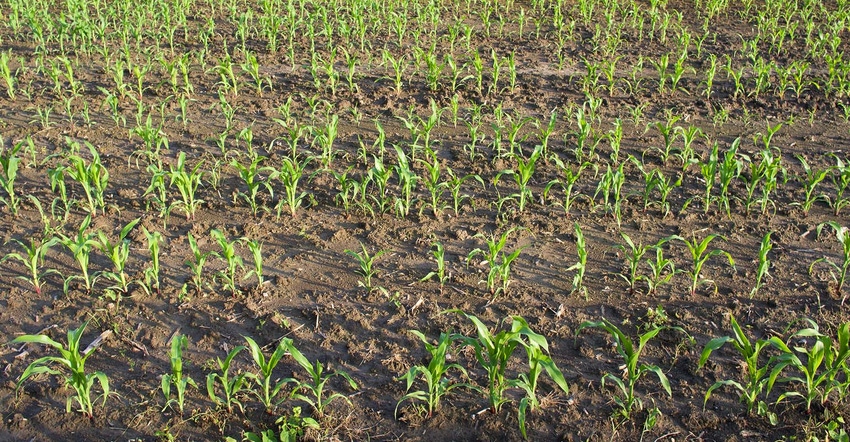June 17, 2019

What are you doing with your unplanted acres this year after crop insurance deadlines passed? We’re asking growers about their decisions to plant soybeans or take prevent plant. Click the Feedback From The Field reporting form and give us your first-hand account on this decision, along with how your crops are faring.
Use the interactive map below that’s updated frequently to see all this year’s reports just by clicking the flagged locations. Click the box in the upper left-land corner of the map to bring up an index of what the different colors of the markers signify and to toggle the week’s reports on and off.
As growers end corn planting for 2019 a new guessing game begins: How much ground will be lost to prevent plant claims?
The answer to this question won’t be known for weeks. USDA’s National Agricultural Statistics Service June 28 reports an updated acreage estimate based on a survey that ended last week. Then the Farm Service Agency puts out its first report on acres farmers certified. Usually, this data comes out the afternoon after USDA publishes updated World Agricultural Supple and Demand Estimates, which this year drops Aug. 12. There’s a chance, however, the numbers could come out sooner because the FSA data will be used to figure the next round of Market Facilitation Program payments.
Based on reports on Feedback From The Field, it appears prevent plant could claim 5 million to 7 million acres. Farmers with unplanted corn ground said they diverted around 31% of those acres to the crop insurance program. USDA June3 said a third of the crop was still unplanted, a figure that went up to 83% last week and likely will hit 90% this week.
Farmers in the eastern Corn Belt and parts of the Upper Midwest were especially hard hit. “We planted about 1/3 of our intended corn and taking Prevent Plant on the rest,” said a farmer in northern Indiana. The ground was about 80% dry enough and 20% marginal. We have about 350 of 500 acres of beans in. “A lot of fields appear to be headed for Prevent Plant around us.”
Conditions of fields that have emerged are highly varied and face uncertain yield potential.
“April planted corn is very uneven,” said producer in north central Illinois. “May planted is uneven with large areas in some fields that you would normally replant. June corn has come up rapidly with good stands but it is June corn. It would look really good if it looked like this on May 1, not June 12.”
USDA June 10 said 59% of the crop was in good to excellent shape. Farmers posting last week noted better conditions overall, though they percentage they rated good to excellent fell.
Farmers said they made good progress planting soybeans last week and rated those fields better than corn. USDA is not expected to report soybean conditions today, however.
Though most concerns from farmers this spring focused on wet condition, there are a few areas that are too dry. Dry weather on the Canadian Prairies extends across the border into the northern Plains.
“The north half of North Dakota is extremely dry,” wrote a producer there who rated crops in only “fair” condition.
Follow along with the season by clicking these links:
Feedback from the Field - June 10, 2019 - Judgement time: Take prevent plant or keep going?
Feedback from the Field - June 3, 2019 - Corn planting deadlines pass as farmers ponder what to do
Feedback from the Field - May 28, 2019 - Growers make progress, but at what cost?
Feedback from the Field - May 20, 2019 - Warm, dry week gets growers in the field as crucial benchmarks arrive
Feedback from the Field - May 13, 2019 - Wet is the word for 2019.
Feedback From the Field - May 6, 2019 - Some farmers in western areas make progress but overall planting remains slow.
Feedback From the Field - April 29, 2019 - Farmers in eastern Corn Belt and upper Midwest face delays.
Feedback From the Field - April 22, 2019 - A few wheels turned but most of the Corn Belt is too wet.
You May Also Like




